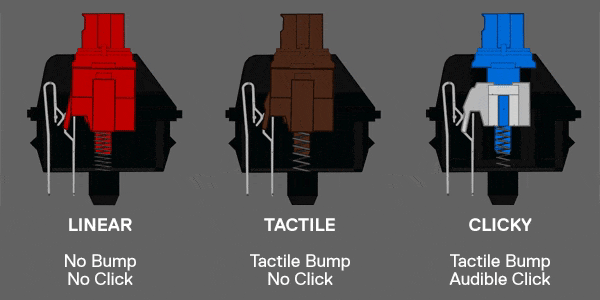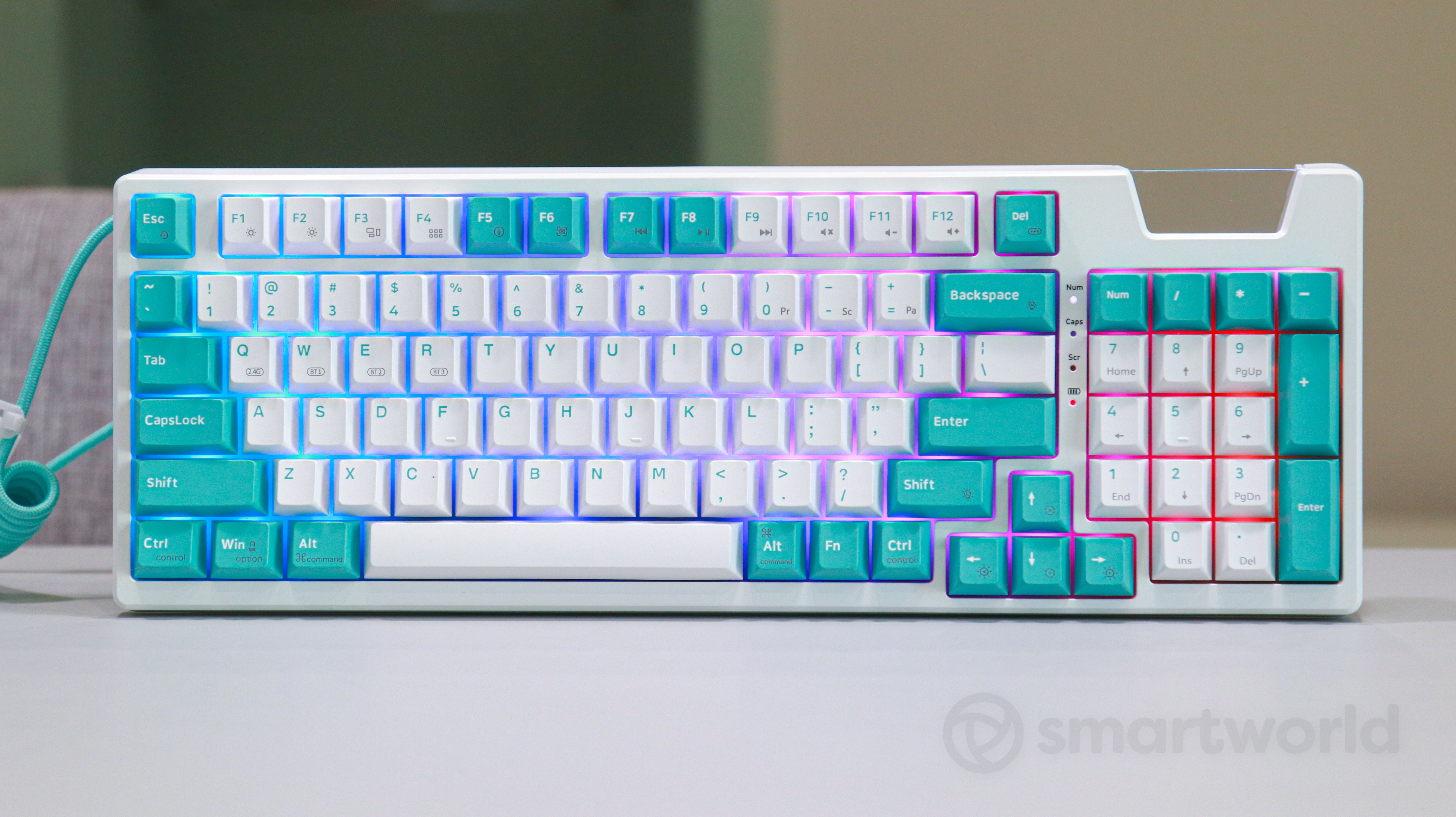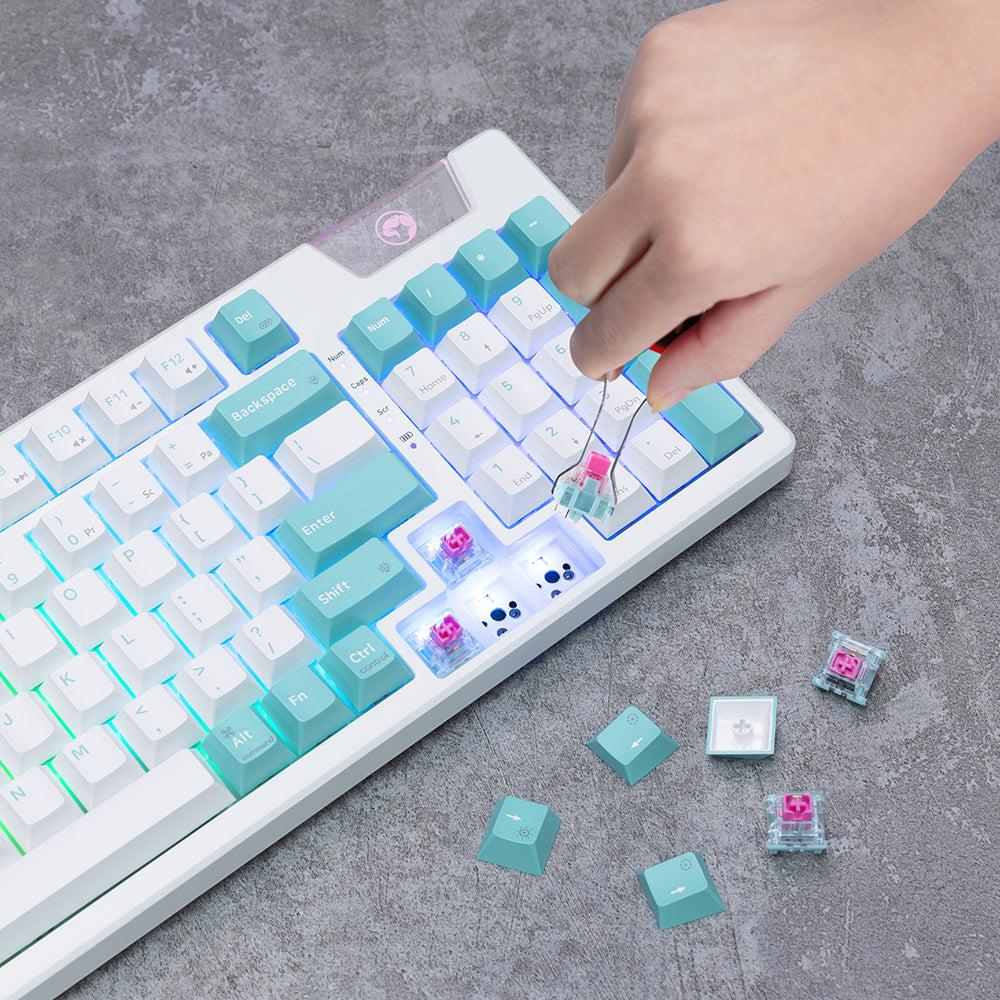I hope that new players can further understand the basic core of mechanical keyboard key feel.So this article will not discuss some of the old vintage switches that only the old greasy guys know.
Rare switches to buy as a collection can also be used, if you do not have to be entangled in the small amount of expensive rare switches, choose to use the comfortable is good enough.
In the prevalence of mechanical keyboards (80-95 years), mechanical switches body a hundred schools of thought.Cherry MX switches, Alps switches, Buckling-spring switches (Buckling-spring Switch) each have their own loyal iron fan.Especially IBM's Buckling-spring keyboard (strictly speaking for the film principle), click key sound unique, the keyboard as a whole solid workmanship and material conscience, so far are keyboard lovers of the collection of good.

Into the 21st century, the most popular on the market is the German cherry MX switches body and a variety of clone switches body (cherry mx switches patent period has expired, other manufacturers "tribute" is not illegal), for the iconic cross daisy column.
Nowadays, the keycap ring is also dominated by the cross daisy.

To cater to the needs of gamers, cherry is still exiting new switch bodies such as the Silent switches, Fast Silver switches, and RGB switch series.

However, some old switches are eliminated, such as paragraph gray switch, orange-red switches, super black, cobalt blue switch, transparent black, transparent white, M8, etc. (these rare switches can be found in the search engine corresponding pictures).
It is worth mentioning that our call of white switches (clear) milk switches (white) is somewhat inaccurate, because white switches should only be translated into white switches, but time has become natural, you can pay attention to when buying.
Numerous switches can be divided according to Linear (Linear), one stage fall (Tactile) and two stage fall switches (Clicky).

In comparison.
Linear is the quietest, Tactile is a bit noisy and Clicky is noisier.
Linear is good for games, Tactile is good for both, and Clicky is good for typing.
But it is only relative, after all, a large number of text inputers also find Clicky switches is annoying, and some people like to use Tactile to play KOF.
Different feel from the different strength of the spring and the different shape of the switches, Clicky two-stage switches body will have a small bump in the switches.

Modern mechanical switches can be roughly divided into three major categories by feel: Clicky (loud switches / like blue switches), Tactile (like brown switches), Linear (like red switches).
What are linear switches?
Linear switches are usually quiet, smooth, and consistent throughout the entire movement. Linear switches are especially used by gamers as the consistent keystrokes allow for more precision in highly competitive games. Linear switches are also enjoyed by people who prefer the smooth movements while typing.

Throughout the entire journey of such switches, all you can feel is the increase in finger pressure between them, and somewhere in there, the keys trigger - there is no sense of paragraph throughout, and this is the linear switches. Red and black are both linear switches, the most obvious difference between the two is the pressure gram, red switches light, black switches heavy, which is the most obvious gap between all linear switches.
- Pros: no sense of paragraph, more suitable for long time use, more versatile shaft options in mass production keyboards.
- Cons: No clear sense of physical feedback, may increase the chance of mis-touch.
What are clicky switches?
Clicky switches are a group of mechanical key switches that are designed to produce a distinct tactile bump as well as a “click “sound when pressed. Clicky switches are purposely designed to be loud—mainly as added feedback when typing. The audible clicks let you know that the keys actually get pressed when you type.
Clicky refers to the sound characteristics of these switches. The blue switches is arguably the most characteristic mechanical switches, and many people think that only keyboards with a clicky sound are mechanical keyboards. As you can see in the picture below, the slider drops quickly when pushed down because the small foot of the switch protrudes beyond the tabs, and then resets as the upper half is lifted. The sound and feel of the blue switches comes mainly from the strike of the slider as it quickly drops and resets.
When you press a key, you will feel a blockage at a certain point. If you continue to press harder, you will hear a click, the switches will trigger, and the blockage will disappear. The blue switches provides a clear ringing sound along with the paragraph.

- Pros: crisp sound, strong sense of confirmation, with a very obvious percussion feedback.
- Cons: not suitable for use in public places, relatively shorter life, more easily fatigued by prolonged use.
What are the tactile switches?
A “tactile switch” is one type of widely used switch that completes an electrical circuit typically when pressure is applied to the device by the user, which then gives the user a perceptible “click” or haptic bump in response, indicating current flow. Current flow is turned off when the switch is released.
Unlike the Clicky switches, which also provides a sense of passage, the Tactile switches is a monolithic switches that derives its sense of passage from the bumps on the switch's small feet. Compared to Clicky switches, these switches are more focused on providing a sense of confirmation in the hand rather than a sense of confirmation in the ear.
The Cherry MX Brown is a typical weak passage-sense passage-switches. If you observe the picture below you can see that the small foot of the switch of the brown switches has a small bump when pressed. When this bump passes through the shrapnel, the fingers feel a certain sense of obstruction, and after the bump passes through the shrapnel, the obstruction disappears and the switches triggers after continuing down the switches. This blocking feeling is not as strong as the blue switches, it is more gentle, but the fingers can feel it. This is why some people will say that the brown switch is similar to the membrane keyboard, in fact, refers to the brown switch has a sense of "paragraph" but not strong, the actual feel of the two is still a very big gap.

- Pros: a sense of key confirmation, softer feel, more comfortable for long time use.
- Cons: Weak sense of paragraph, mediocre feel of mass-produced brown switches.
Compared to membrane keyboards, mechanical keyboards are much more expensive. In order to find their favorite feel to buy dozens of keyboards? It is not impossible, but we can first choose to buy a trial switch device.
You can spend less money to experience more different feelings (of course, and the whole keyboard a switch knocking feeling must be different, but the heart can have a prediction).




Leave a comment
All comments are moderated before being published.
This site is protected by reCAPTCHA and the Google Privacy Policy and Terms of Service apply.